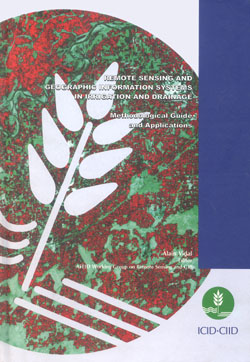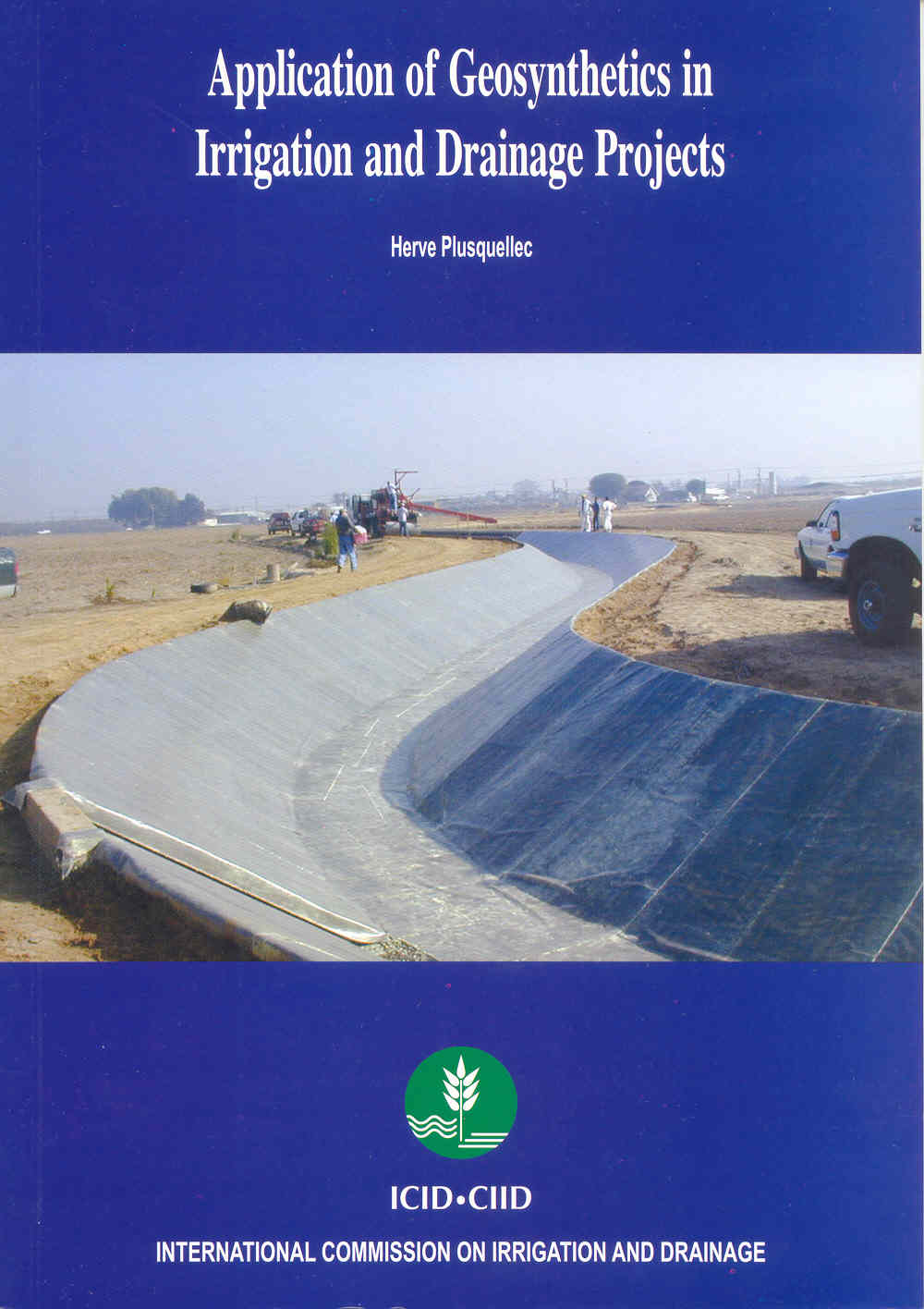

Heavy soils of low hydraulic conductivity often require very closely spaced drainage systems for satisfactory water control. With conventional pipes, the cost of such systems is usually uneconomic and hence alternative techniques are required. Surface drainage is one possibility; the other is mole drainage.
Mole drains are unlined circular soil channels which function like pipe drains. Mole drains are formed with a mole plough, which comprises a cylindrical foot attached to a narrow leg, followed by a slightly larger diameter cylindrical expander. The foot and expander form the drainage channel and the leg generates a slot with associated soil fissures which extend from the surface down into the channel.
The number and size of the leg fissures produced with a given mole plough are dependent upon soil conditions. The success of a mole drainage system is dependent upon satisfactory water entry into the mole channel and stability of mole channel for an acceptable period. Currently, mole drainage systems are most commonly used for surface water control in perched water table situations.Mole drains are also used in some groundwater problem areas and in paddy fields. Their use as a temporary subsurface drainage system for the reclamation of saline and saline sodic soils has been successful in field experiments
Their major advantage is low cost, and hence they can be installed economically at very close spacing. Their disadvantage is their restricted life, but, providing benefit-cost ratios are favourable, a short life can be acceptable.
Related items you may like











































































Irrigation
Sources of Irrigation
Irrigation History +
Sources of Irrigation +
IMPROVING SOIL MOISTURE +
Ponds +
Tanks +
Diversion Weirs +
Dams and Reservoirs +
Groundwater +
Conjunctive Water Use +
Wastewater +
Poor Quality Water +
Application of Irrigation water
Canal Irrigation +
Flood Irrigation +
Deficit Irrigation +
Supplemental Irrigation +
Sprinkler Irrigation +
Drip Irrigation +
Lift Irrigation +
Centre Pivot Irrigation +
Tidal Irrigation +
Micro-Irrigation Technologies for Small Holders +
Automatic Irrigation Systems +
Pressurized Irrigation +
Irrigation in Viticulture +
Purpose of Irrigation
Instruments and implements of Irrigation
Pumps +
Centrifugal Pumps +
Submersible Pumps +
Turbine and Jet Pumps +
Conveying Pipes +
Sprinklers +
Drippers +
Canal Automation Systems +
Irrigation Management
Economics of Irrigation System +
I&D System Types +
I&D Investment Functions +
I&D Management Issues +
Participatory I&D Management +
Equity in Irrigation +
Irrigation Services +
Irrigation and environment
Pollution and Irrigation +
Irrigation and Climate Resilience +
Environmental Aspects of Irrigation +
Environmental Impacts of Irrigation +
Green Lawn Irrigation +
Safe Use of Waste Water in Irrigation +
Organic Agriculture +
Soil Health +
Soil Health Management +
Quality of Irrigation Water +
Capacity Development
Drainage
Drainage Types and Systems
Agricultural Drainage +
Field Drainage systems +
Canal Irrigation and Drainage +
Surface Drainage Systems +
Subsurface Drainage +
Mole Drainage +
Bio-Drainage +
Regional Bio-Drainage +
Drainage Issues
- Mole (mol)
- Drainage area, Drainage basin, River basin, Catchment area, Catchment basin, Catchment, Watershed
- Water parting, Drainage divide, Divide, Watershed divide, Watershed boundary, Topographic divide
- Yield of drainage basin, Annual yield of drainage basin
- Drainage modulus, or Drainage coefficient
- Monomolecular layer, monolayer
- External drainage
- Mole
- Internal drainage
- Bio-drainage
- Drainage head
- Mole (U.S. usage)
- Endogenic drainage
- Allogenic drainage
- Endoreic drainage
- Areic drainage
- Exoreic drainage
- Drainage gallery
- Drainage wells
- Horizontal drainage blanket, Pervious blanket, or Drainage filter
- Cross-drainage work, or Drainage crossing
- Level crossing, or Level drainage device
- Syphon aqueduct, Drainage syphon, Cross drainage culvert
- Drainage overpasses
- Venturi flume drainage crossing
- Drainage culvert, or Supply culvert
- Cross drainage
- Inverted drainage well, or Disposal well
- Irrigation through buried drains, Irrigation-drainage, or Vallenhove process
- Drainage
- Drainage channel
- Artificial drainage
- Lowland drainage
- Agricultural land drainage
- Drainage system
- Closed-drainage area, Blind drainage area, or Non-contributing area
- Drainage benefit
- Degree of drainage
- Field drainage
- Field drainage system
- Land drainage
- Natural drainage system
- Seepage drainage
- Subsurface drainage system
- Open channel drainage
- Surface drainage
- Main drainage system
- Drainage fittings
- Drainage pump sump
- Drainage trench
- Drainage head
- Horizontal subsurface drainage system
- Natural drainage or Natural drainage capacity
- Improved drainage or Artificial drainage
- Random drainage system
- Trenchless drainage
- Open-channel drainage
- Convergent drainage pattern
- Natural drainage systems, or Random drainage systems
- Cutoff drainage system, or Intercepting drainage system
- Herringbone drainage system
- Gridiron drainage system
- Double-main drainage system
- Composite drainage system
- Grouping drainage system
- Zigzag drainage system
- Cross-slope ditch system, or Drainage-type terraces
- Drainage-density
- Drainage pattern
- Superposed drainage, Super imposed drainage or Inherited drainage
- Subsurface drainage, Under drainage, Subsoil drainage, Underground drainage, or Covered drainage
- Relief drainage system
- Convergent drainage system
- Elkington drainage system, Sink-hole drainage
- Rerolle drainage system
- Across-the-slope drainage system, or Keythrope drainage system
- Vertical drainage, or Inverted well
- Mole plough
- Mole, or Mole ball
- Mole drains
- Mole drainage
- Surface drainage system
- Drainage coefficient, Drainage modulus or Drainage design rate
- Drainage design rainfall
- Drainage efficiency
- Drainage season
- Angular drainage pattern
- Arterial drainage
- Dendrite drainage
- Drainage boards (also called prefabricated drains)
- Slot drainage
- Radial drainage pattern
- Trellis drainage pattern
- Drainage density
- Vertical subsurface drainage system
- Drainage pumping station, Drainage pumping plant
- Drainage terrace, Drainage control terrace, Interception and diversion terrace, Runoff control terrace, or Channel terrace
- Land drainage
- Design drainage rate
- Soil drainage status
- Excessive drainage
- Imperfect drainage
- Underdrainage
- Singular layout drainage design
- Natural drainage layout
- Composite layout drainage system
- Mole drainage
- Free drainage
- Poor drainage
- Drainage basin











